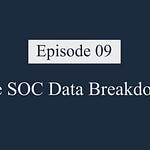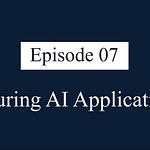Featuring:
Omer Yair - Co-founder of Raven.io
Martin Torp - Co-founder of Coana (Now part of Socket.dev)
Summary
In this conversation, the hosts explore how reachability technologies help in vulnerability management, the challenges faced in implementation, and the best practices for choosing the right approach. The discussion also highlights the significance of network reachability and function execution in assessing risks, as well as the importance of vendor comparisons in the cybersecurity landscape.
Takeaways
Reachability is about determining if a vulnerability is relevant to an application.
The goal of reachability is to assess exploitability.
Static analysis is simpler and does not require a running application.
Runtime reachability provides real-time insights into application behavior.
Network reachability helps prioritize vulnerabilities based on actual risk.
Function execution during runtime indicates the highest priority vulnerabilities.
Choosing between static and runtime reachability depends on organizational constraints.
The volume of CVEs is increasing, making effective prioritization essential.
Understanding vendor capabilities is crucial for effective reachability analysis.
Performance monitoring tools like Grafana can help assess the impact of security sensors.
Chapters
00:00 Introduction to Reachability Technologies
01:39 Defining Reachability and Its Importance
04:38 Exploring Static vs. Runtime Reachability
10:23 Diving Deeper into Static Reachability
19:02 Understanding Runtime Reachability and Its Types
26:19 Understanding Runtime Function Execution
28:33 Static vs. Runtime Analysis: A Complementary Approach
34:23 Choosing the Right Reachability Method
37:32 Challenges in In-House Vulnerability Management
39:47 The Importance of Effective CVE Management
42:45 Navigating Reachability Analysis Challenges
45:45 Optimizing Scan Times and Performance
50:47 Performance Insights and Attack Path Considerations










